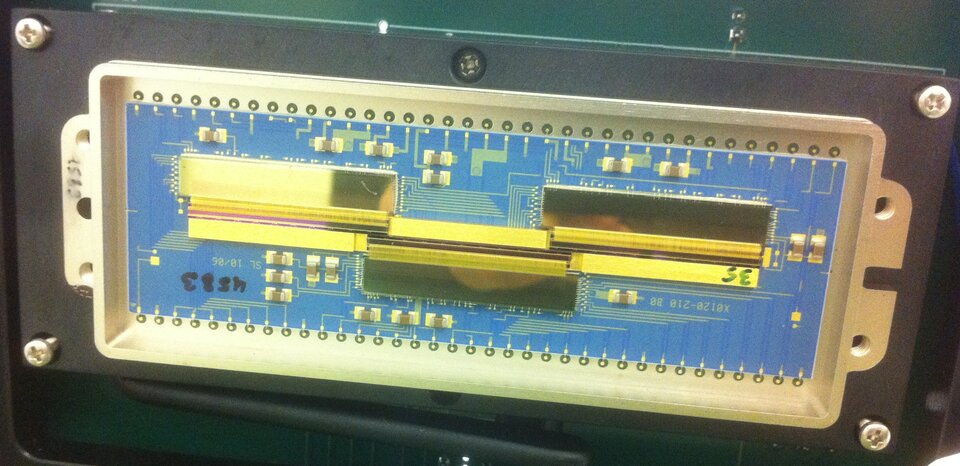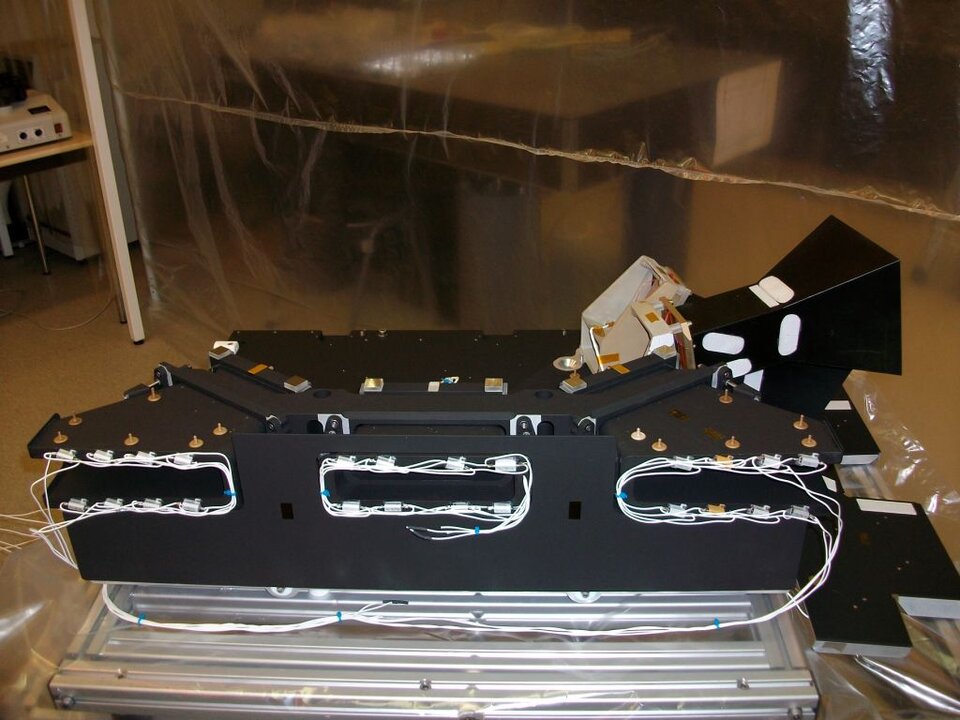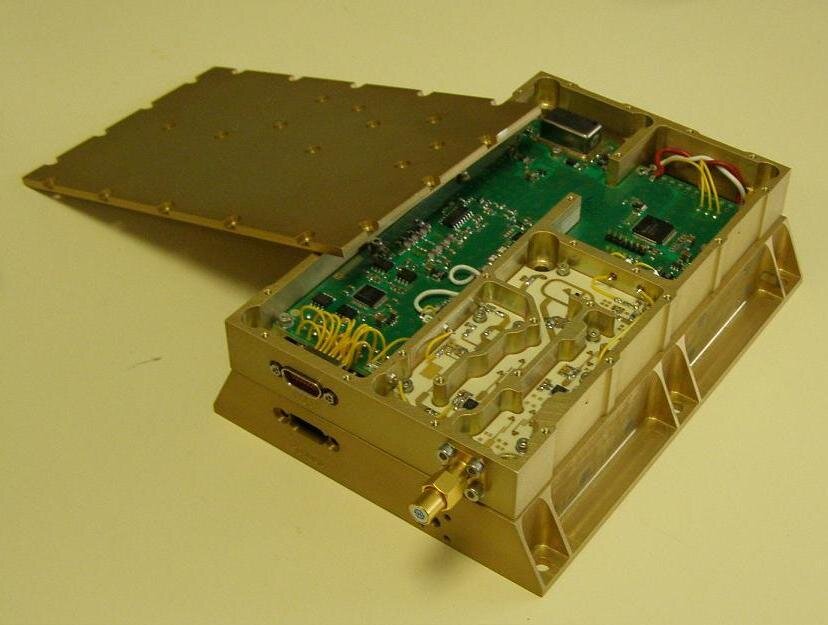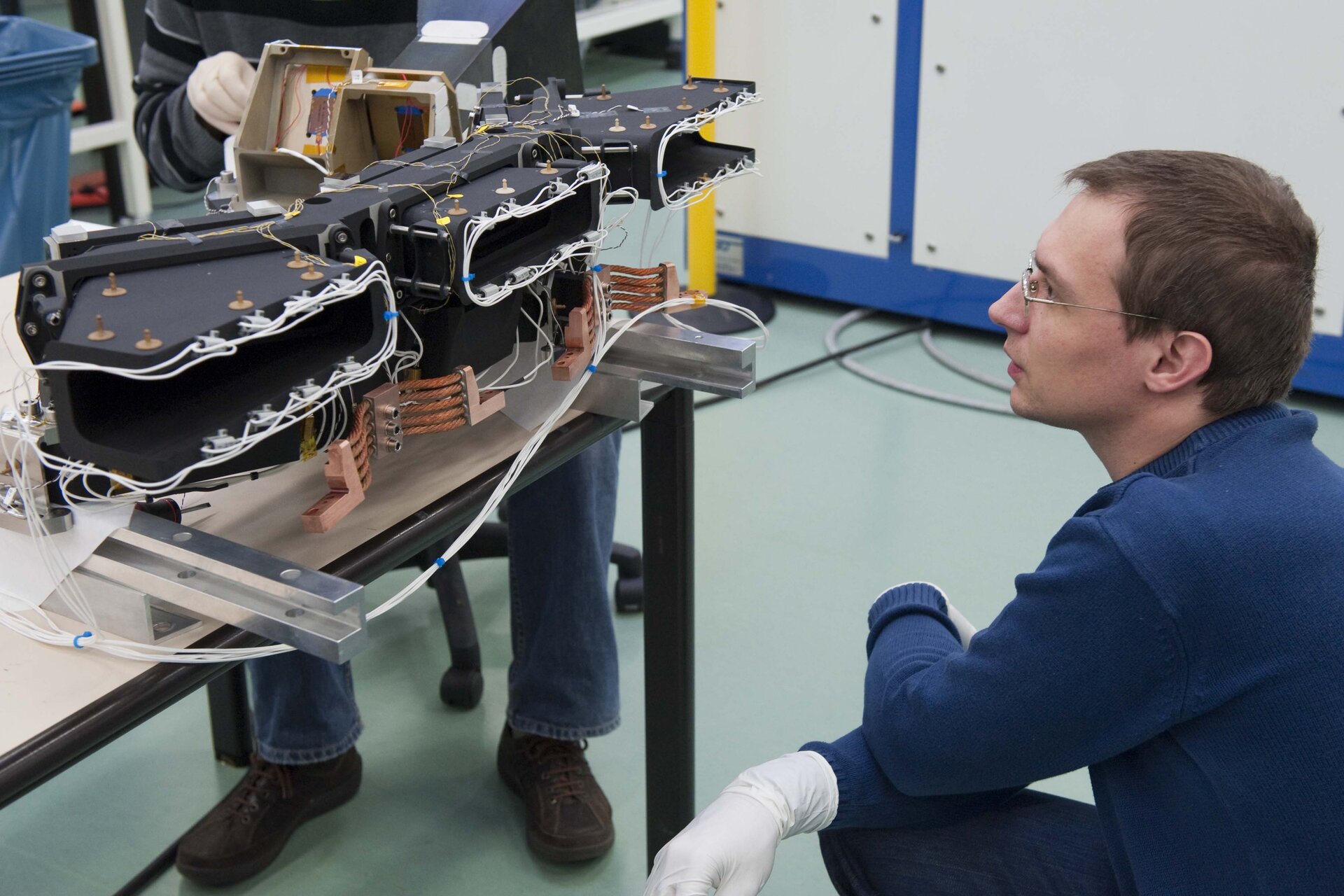Technologies
Proba-V’s biggest technology challenge has been finding a way to re-engineer the Vegetation instrument to fit onto a Proba platform. While Vegetation is one of the smallest payloads aboard the lorry-sized Spot-5 satellite, it still weighs more than 130 kg – bigger than an entire Proba satellite.
Vegetation had to be reduced in volume by a factor of 10. At the same time ESA also sought improved performance, including increased spatial and spectral resolution. To achieve this meant taking advantage of all advances in technology since the instrument was first designed in the early 1990s.
Back then, only a combination of heavy glass lenses could yield Vegetation’s uniquely wide 105° field of view, and separate lenses were required for its four spectral bands. Its sensitive short-wave infrared detectors also demanded a heavy, power-hungry cooling system. To shed mass, glass lenses have been swapped for lighter aluminium mirrors, which have the additional advantage of observing across all spectral bands without the need for duplication.

The challenge has been to produce aluminium mirrors with just the right ‘aspheric’ shape needed for Vegetation’s wide viewing angle. Reducing the size of mirrors needed, the imager has been subdivided into three separate telescopes with overlapping views of 34° each, although even then its mirrors required a manufacturing technique of unprecedented precision known as ‘single-point diamond turning.’
A prototype telescope was developed in 2009 through ESA’s General Support Technology Programme (GSTP), serving to develop hardware to flight readiness. OIP Sensor Systems is overseeing development of the Proba-V imager.

XenICs (BE) is responsible for Vegetation’s short-wave infrared detectors, a particular technical challenge which has been supported through ESA’s GSTP.
To match the Vegetation instrument’s 100° field of view, a total of three very long linear detectors of 1024 pixels each have been designed. These detectors are mechanically butted together to have a slight 80 pixel overlap. The detectors are made from indium gallium arsenide, which delivers high sensitivity without the need for active cooling.

To store all the data produced by the Vegetation instrument, then get it down to Earth, is a challenge in itself for such a small platform. Proba-V incorporates a novel 16 gigabyte onboard storage capacity based on flash memory. It also has a powerful X-band transmitter and utilises advanced compression techniques to downlink data to its data reception station, located in the north of Europe.
Proba-V will carry fewer guest technology payloads than a standard Proba mission, because its main instrument is the mission priority. However it will have an advanced radiation detector called the Energetic Particle Telescope, which will measure the energy, angle and mass of radiation particles in the satellite’s vicinity.

Proba-V’s communication subsystem will also incorporate a gallium nitride amplifier, the first European-sourced GaN device to fly in space. GaN has been called the most promising semiconductor since silicon, capable of operating at higher powers and temperature. It is also inherently radiation resistant. Another guest technology payload slot remains to be allocated.


